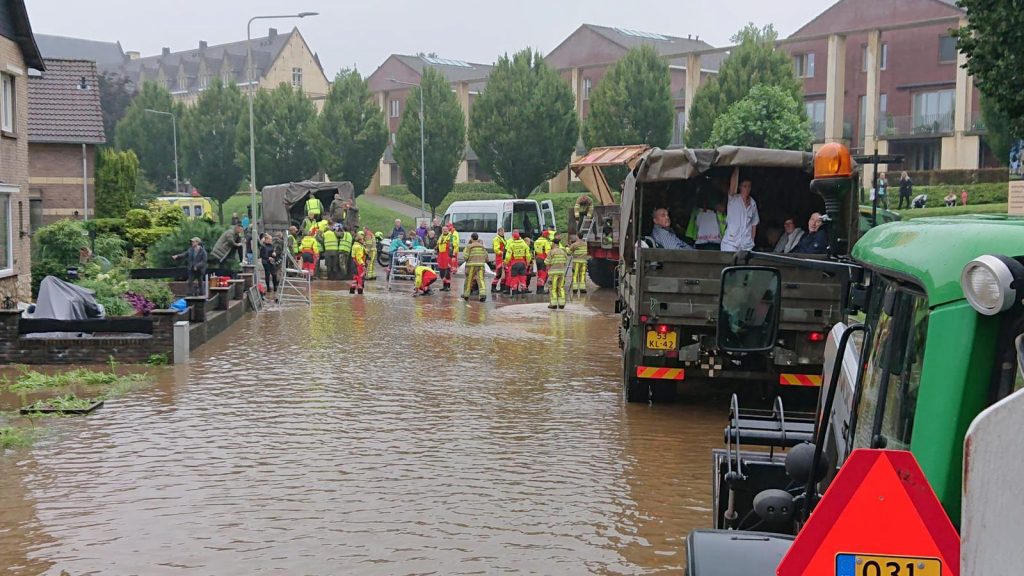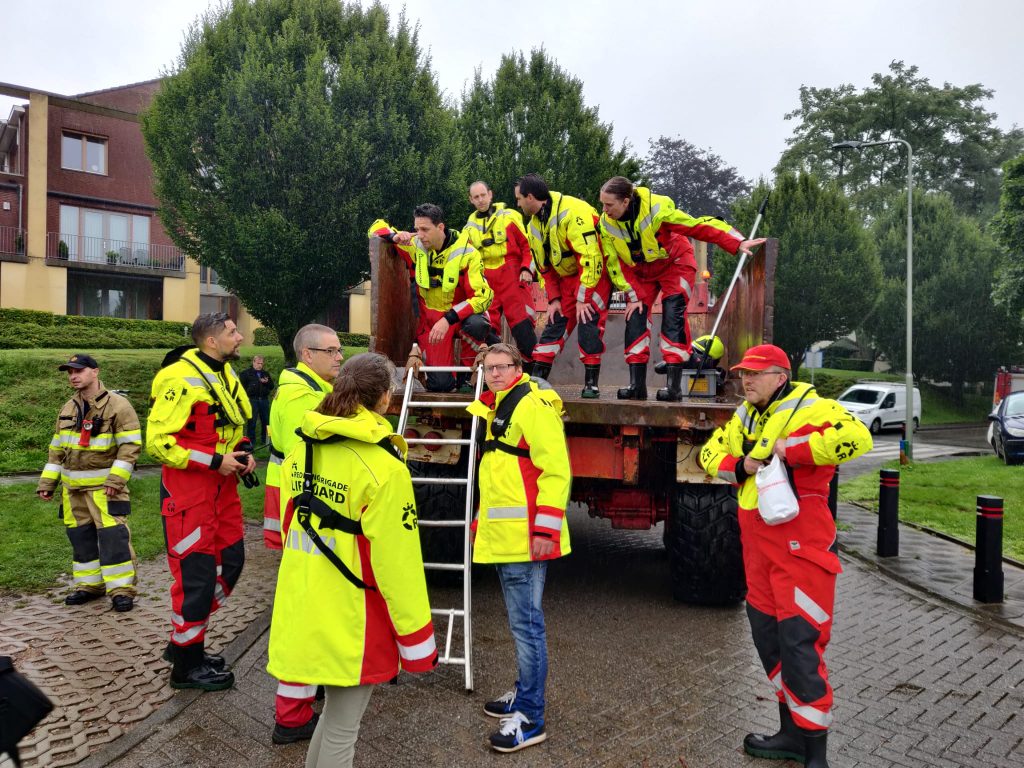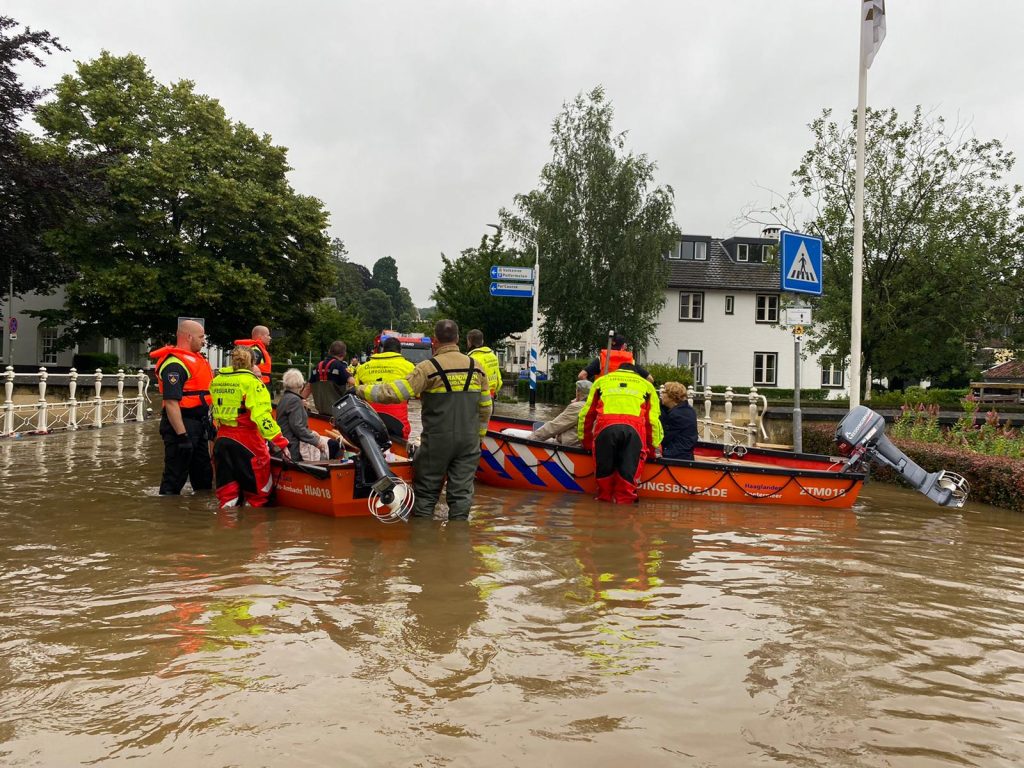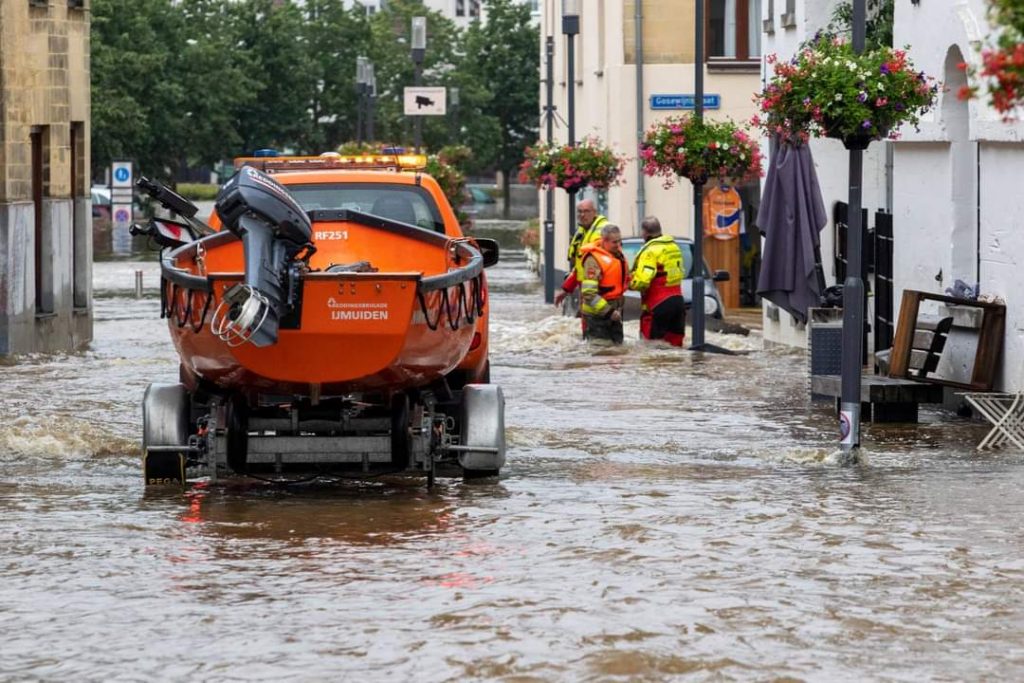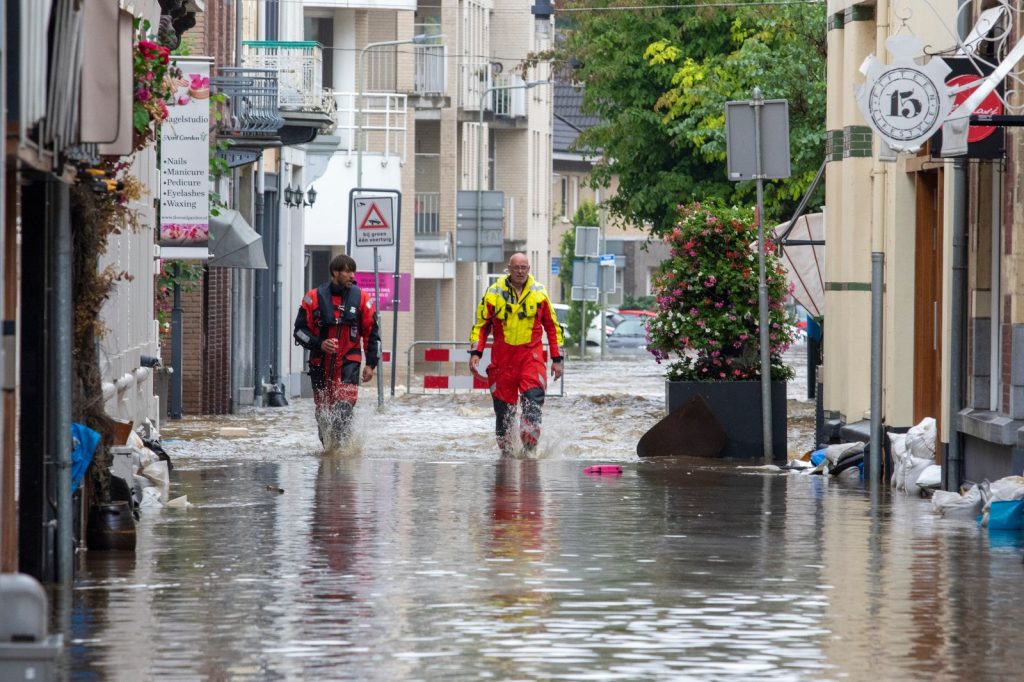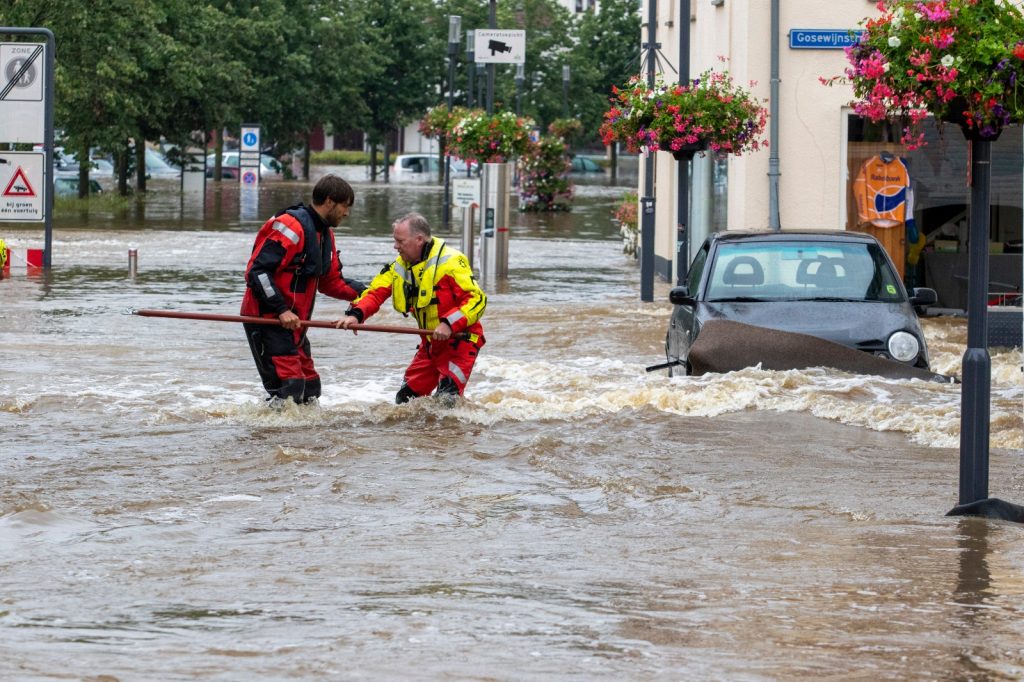Limburg 2021
In July 2021, the Noordwijk Rescue Brigade (NRB) was called out for a deployment for the National Rescue Fleet (NRV) during the high water levels in Limburg.
On Wednesday, July 14 during the day it became clear that the water in the south of Limburg would rise due to a long period of heavy rainfall over an area. Reddingsbrigade Nederland has been in contact all day with the safety region Zuid Limburg for offering our services in combination with the national coordination center.
The alarm
On Thursday 01:00 the request came from the safety region for our assistance. The NRB was immediately put on alert by the national action center of Rescue Netherlands. This means that the unit must be ready for deployment and be able to leave within an hour. After the NRB team was reported ready for deployment, the actual alarm came at 02:00 hours. The team members packed their things for several days and left for Limburg with priority. Along the way there were some changes in the arrival location, but eventually the team arrived at the fire station in Maastricht at 05:30.
The first bet
July 15, 2021
When the National Rescue Fleet is deployed in a "disaster area," there is no immediate deployment. There is a wait for other teams, information and a concrete assignment. First, the NRB was ordered to assist with the evacuation of a care center in the center of Valkenburg. At the care center, the (Mobile Unit) ME and the Fire Department were already present and more teams were on their way. Because the first floor was no longer under water, assistance was no longer needed. This allowed the team to take the next elevator back to the assembly point.
Clear route for trucks and tractors
Arrived there, the flow with evacuees had begun. The defense trucks and tractors with loading bodies were full of people waiting in a traffic jam. This traffic jam was created because the intersection to where the water was high was constantly blocked during the unloading of the people. A route was then created especially for the trucks and tractors, so that the intersection was not always jammed.
Evacuate a flooded area
Shortly after this, the NRB was asked to assist with the evacuation with a number of vlets further down the road. Together with 4 units, the NRB left for the area "between the two Gullies" to evacuate people here. This area was not accessible to vehicles because the water was flowing very hard and a bridge had already collapsed. As a result, all other bridges were also declared unstable.
On location, the teams were reinforced with two men from the ME to convince any refusers to come along. This cooperation went like a well-oiled team, enabling the teams to evacuate the neighborhood and bring both people and animals to safety with the boat. The technique used for this involved wading with the boat, sometimes using some motor support to make it easier to get against the current.
After all the voluntary evacuees were evacuated, the ME was supported to evacuate the remaining people. This was sometimes done under duress from the ME and sometimes after speaking to our own rescuers. Eventually these last people also went along. As a result, the area could be considered evacuated.
Motorcycles over own safety
After the boat was back on the trailer, the request came to go with a local firefighter as a guide to and house, where at least four people were believed to still be present. This was a home with a garage full of classic motorcycles, which the owner did not want to part with. With the help of the firefighter, the team went to the scene.
However, this location was difficult to walk through so the team had to continue on foot. Because the current was so strong, the rescuers had to wade out, sometimes holding on to facades to avoid being washed away. Because the current was so strong, it was not possible for every rescuer to reach their destination. Fortunately, a defense vehicle arrived so our rescuers could get a ride.
At the scene, the owner appeared to have secured the motorcycles on the second floor of the home. In consultation between the firefighter and the commanding officer, it was decided that the people could safely stay behind. This allowed the rescuers to return to a dry place to be reunited with the driver and their own car.
Return to Noordwijk
At the end of the day, there was no clarity on sleeping arrangements for the active units. As a result, the NRB team had to decide to drive back to Noordwijk at around 19:00, after signing off with the Duty Officer. Finally, the team arrived safely back in Noordwijk around midnight.
Second deployment
July 17
On Saturday, July 17, another deployment request followed, this time in the area of Roermond. Again, a team was quickly assembled and had to be on location at 23:00. As with the first deployment, the assembly point changed along the way. In the end, the team was expected at the sports hall in Bergen.
The NRB team was placed at rest here and was allowed to take a seat on a stretcher that had been prepared by the Red Cross. The team had to be ready for deployment and be able to leave within a short time. Fortunately, everyone was able to get a relatively good night's sleep until 06:00.
For the rest of the day, the team was on standby at the Gennep fire station, after the area had been explored and monitored. The operational management had decided that the rescue team should stay "low profile" and not show too much to avoid panic among the population. Eventually, around 15:30, the team received word to return home. When they arrived in Noordwijk the boat was cleaned up and everyone went home.
Unfortunately, this team itself was not deployed, but this is also one of our tasks. In this deployment we were on standby in case the dikes broke. This was a real situation around Gennep. The water was only a few centimeters below the edge of the dike with a residential area behind it, which would largely be flooded.

